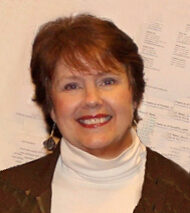
Nancy Huntting, Aesthetic Realism consultant, writes:
“What Kind of World Is It?” is the title of the new issue of TRO. That important question has an answer—an urgently needed and thrilling answer—given mightily here!
With all there is in the world to rightly be against—you’ll learn how all true poetry, all true art, shows the world itself has a structure we can like unlimitedly. The basis of this TRO is the following great principle of Aesthetic Realism, stated by Eli Siegel: “The world, art, and self explain each other: each is the aesthetic oneness of opposites.”
The authentic, logical comprehension and hope that people are looking for is in this issue of The Right of Aesthetic Realism to Be Known!
The commentary by Ellen Reiss begins:
Dear Unknown Friends:
We begin, here, to serialize a lecture Eli Siegel gave in 1973. It is about poetry, and art itself. And it’s about this world we’re in, which can confuse one so much, also please one, also make for anger and distress. What kind of world is it? People ask that usually with a growl or a sneer. But it’s a question humanity does need to try to answer truly. And Aesthetic Realism answers it—with might, and accuracy, and beauty, and logic, and kindness.
Why Does It Matter?
Mr. Siegel titled the lecture we’re serializing These Speak of Poetry. It is about the difference between poetry that is authentic and something that may look like poetry but is not the real thing. Why does that distinction matter, if it can be made at all? Well, it can be made. And it matters, mightily and dearly, for this reason: Aesthetic Realism explains that it’s authentic art in every field which shows what the world itself is. Indeed, real poetry and all real art show that the world itself can be valued without end—even as we’re very much against things in the world. The basis of this lecture—and, really, of our deepest, most intense hope—is in the following principle stated by Eli Siegel: “Poetry, like Art, is the oneness of the permanent opposites in reality as seen by an individual.”
Let’s take, for example, fundamental opposites in reality: order and freedom. These are present as one in every instance of good art. In a print by Hokusai of a wave, they are there, as we feel neatness inseparable from wildness. In Charlotte Brontë’s novel Jane Eyre, we find in the title character a deep desire to be exact—and also a tremendous stir of emotion. In a loved form of dance, the waltz, we feel the orderliness of our steps and at the same time how thrillingly free we are!…Read more